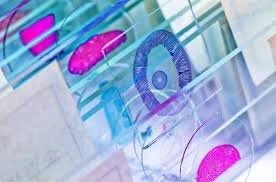Introduction
Tissue is a term that refers to a cellular organization of cells and extracellular matrix that usually has a synergistic function. The functional grouping of multiple tissues then forms organs. The term “tissue” originates from a French word “tissu” which carries the meaning of “woven” or “to weave”. The study of tissues is known as histology while the study of the disease of tissues is known as histopathology. Tissue is important in research and is often referred to as a biological sample, biospecimen, tissue sample, or specimen. These terms refer to fluid or tissue such as saliva, fluid, feces, spinal fluid, brain, organ tissue, tumor tissue, bone marrow, etcetera. Once permission is given by the donor or patient to have a medical procedure performed, it also allows the doctor to take a tissue specimen to help achieve a diagnosis and propose a treatment plan. These specimens are also crucial to help in advancing the industry of medical science and research as it provides researchers study material.
Applications
As previously mentioned, tissues can be used in the diagnosis and classification of diseases. For example, when a patient is suspected of cancer, a specimen is obtained and the cell morphology in the tissue is studied. It will help the healthcare team to decide if the tissue is cancerous, type of cancer, and characteristics of cancer. Tissue samples can also help determine if the patient is responding appropriately to treatment and the side effects that occur. Besides diagnosis and treatment, the tissues can also be used in research to retrospectively compare tissue characteristics and patient response to help the team understand the effectiveness of a drug as a treatment option. Prospectively, it can be used to determine if the theories about how a drug works are accurate. Archived tissue is essential in testing new discoveries, understanding possible causes of cancer, discovering new biomarkers that identify cancer, identifying targets for treatment, and developing new treatments that target a gene or the signaling process.
Study of Tissue and Cancer
Cancer is thought to arise when there are gene mutations in a cell. When the mutations affect the normal cell growth, it can contribute to the development of cancer. A gene mutation can be hereditary. While there are inherited mutations that result in a condition or disease, there are also other mutations that increase the likelihood or risk of developing a disease. Gene mutations can be caused by various factors such as radiation, chemicals (present in the environment or diet), viruses, bacteria, and more. It is also important to note that most cancer-causing mutations are due to spontaneous errors. Spontaneous errors occur when mistakes occur during normal DNA replications. When the mistake is left uncorrected, further cell division may result in the persistence of mistakes in the subsequent cell generations. To learn and understand more about cancer, tissue specimens are vital to enable further research and study.
This can be done by studying cancer cells and individual genes. For example, the study of oncogenes and their role in cancer led to the identification of the HER2 gene. The presence of this gene in a normal cell causes the cell to make receptors for a growth factor. The identification of this gene led the researchers to discover that too many copies of the HER2 gene in breast cancer patients causes the cells to grow and divide faster. The HER2 gene was discovered through the study of tumor tissues obtained from patients with breast cancer. This also allowed the researchers to observe how treatment affects different patients and the researchers concluded that patients with multiple HER2 gene copies have poorer survival rates due to more aggressive cancers.
Study of Tissue and Treatment Development
Through tissue donation by breast cancer patients, it was discovered that approximately 25 to 30 percent of women have the HER2 gene mutation. Since this mutation results in the production of more copies than normal, it is also known as over expression or gene amplification. Via these samples, the researchers found that some breast cancers have more growth factors compared to others. This led to the identification of a target for treatment for patients with HER2 positive breast cancer. The treatment blocks the receptors and may slow the growth and division of cancer cells.
To develop a treatment that is specific for those with HER2 positive breast cancer, the researchers looked for a chemical that could block the growth factor receptors. They tried a monoclonal antibody that would target the extra receptors on the cancer cell surfaces. The researchers were able to identify a chemical known as Herceptin for this purpose. After various experiments using tissues and animal models, Herceptin was finally ready for clinical trials involving volunteer patients. The study found that Herceptin was indeed effective for some with HER2 positive breast cancer even when other treatments were no longer working. Since Herceptin is target specific, it also had fewer side effects compared to other drug treatments.
Biomarkers
The study of tissues has also led to the discovery of biomarkers. Biomarkers are biological substances in a cell that can help predict the disease progress, prognosis, and effectiveness of treatment. Without the development of biomarkers, doctors would not be able to tell which patients would benefit from Herceptin. Another example would be the identification of Epidermal Growth Factor Receptor (EGFR) mutations among patients with lung cancer. Those who test positive will benefit from an EGFR inhibitor drug known as gefitinib.
Conclusion
Tissue is important as it helps the study of disease progression, determine prognosis, and identify the best treatments for different diseases. It has significantly contributed to the advancement of the medical industry.
References
Tissue (biology). Wiki. Accessed 4/11/2019. https://en.wikipedia.org/wiki/Tissue_(biology)
What is tissue? Why is it important? Research Advocacy Network. Accessed 4/11/2019. https://www.roswellpark.org/sites/default/files/What_is_Tissue__amp__Why_is_it_Important.pdf
Cell differentiation and tissue. Scitable. Accessed 4/11/2019. https://www.nature.com/scitable/topicpage/cell-differentiation-and-tissue-14046412








